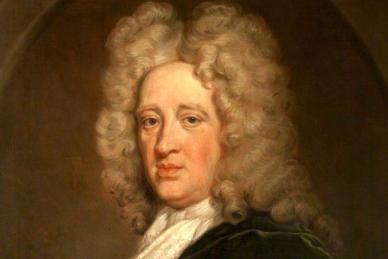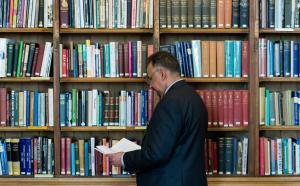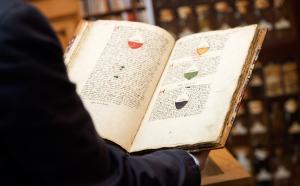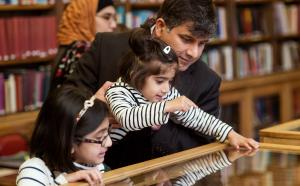
Archibald Pitcairne
(25 December 1652 – 23 October 1713)
College Role:
Founder

Notable Achievements
In 1691, Pitcairne was appointed Chair of the Practice of Medicine at the University of Leiden.
Key Publications
- Solutio problematis de historicis, seu, De inventoribus dissertatio (1688)
- Epistola Archimedis ad regem Gelonem (1710)
- Pitcairne’s published works collected and translated into English (1715)
- Pitcairne’s Leiden lectures compiled (1717)
Biography
Archibald Pitcairne was born in Edinburgh on 25 December 1652 to Alexander Pitcairne, a merchant and magistrate. Pitcairne entered the University of Edinburgh in 1668 and graduated MA on 20 March 1671. His early studies included law and divinity, which he abandoned due to ill health. Pitcairne travelled to Paris where his focus shifted to medicine. In 1675 he began to study mathematics, in which he rapidly became proficient. Pitcairne graduated MD from Reims on 13 August 1680 before returning to Edinburgh. Back in Edinburgh, Pitcairne quickly joined the circle of elites, including Robert Sibbald, who frequently held meetings modelled after the Royal Societies of Europe. Pitcairne, with Sibbald, was one of the founding members of the Royal College of Physicians of Edinburgh, which obtained its charter on 29 November 1681. In about 1680, Pitcairne married Margaret Hay, although they had no surviving children. Margaret died in 1690.
Pitcairne was close friends with David Gregory, a precocious mathematician. They jointly wrote mathematical papers and this background led to Pitcairne championing what became known as the iatromechanical theory of physiology. This hypothesis was based on the assumption that bodily functions, such as circulation, were determined by mechanical factors and could better be explained by Newtonian physics rather than the imbalance of humours. Pitcairne’s enthusiasm for this theory led to him publishing Solutio problematis de historicis; seu inventoribus, a monograph supporting the claim that William Harvey, rather than the ancient Greeks, had discovered the circulation of the blood. This publication was largely responsible for Pitcairne being appointed (jointly with Robert Sibbald and James Halket) Professor of Medicine at the University of Edinburgh. In this position he became one of the more eminent protagonists of iatromechanical theory and, in 1691, he was invited to the prestigious Chair of the Practice of Medicine in the University of Leiden. On the journey there, he visited Isaac Newton at Cambridge.
Pitcairne moved to Leiden in April 1692 and in his inaugural lecture attempted to outline his new theory of medicine based on Newton’s principles. Pitcairne wrote a series of four dissertations based on the natural philosophy of Newton.
His stay at Leiden was short because his future wife Elizabeth Stevensone did not wish to settle there. Pitcairne and Elizabeth married on 8 August 1693 and had four surviving children. Upon his return to Edinburgh he became embroiled in an ongoing controversy over fever treatment. Andrew Brown, a follower of Thomas Sydenham, had advocated a new method of treating continual fevers (bloodletting, purging and a paregoric like laudanum), a view not shared by the traditionalist Edinburgh physicians of the day, whose treatment was based on emetics and particularly diaphoretics. The fact that Brown was an outsider, an empiricist and a Whig, further heightened opposition within the College. As College Censor, Pitcairne’s role was to defend the College line against such medical heresy. But his Newtonian view in Dissertatio de curatione febrium, that purgatives and bloodletting formed part of febrile treatment because of their mechanical effects, was viewed with outrage by some colleagues.
By remaining a devoted Episcopalian and Jacobite, at a time of great friction between them and the Presbyterian establishment, and by his outspoken and scathing criticism of all things Presbyterian, he made more enemies. A fight between rival factions, one around Pitcairne, the other around Robert Sibbald, fuelled the ‘riot in the College’. After this, Pitcairne was excluded from the College, along with others including his father-in-law, Sir Archibald Stevensone, the first president of the College.
In 1701 he was admitted to the Incorporation of Surgeons where he promoted the study and teaching of anatomy. He provided the summing-up at the first two successful public demonstrations of anatomical dissection performed in the ‘new’ Surgeons Hall. Pitcairne was the most distinguished member of the Incorporation at that time and his influence led to the appointment of Robert Elliot, the Incorporation’s ‘public dissector of anatomie’, and one of his Leiden pupils. Elliot became the first professor of anatomy at the University of Edinburgh, the first such chair in Britain.
Pitcairne was a loyal Jacobite and wrote poetry, although he did not advocate the cause further as he was on good terms with many politicians, both Whig and Tory. Little is known about the last years of Pitcairne’s life. He published little, although his collected works were compiled and published posthumously. Pitcairne had apparently been in poor health for some time and died in Edinburgh on 23 October 1713. He is buried in Greyfriars churchyard.
Pitcairne was one of the most scholarly doctors of his day, yet iatromechanical theory essentially died with him. His greatest legacies were his influence on some outstanding pupils and providing the most important early link between Leiden and Edinburgh, a link crucial in the establishment of the University of Edinburgh Medical School.



